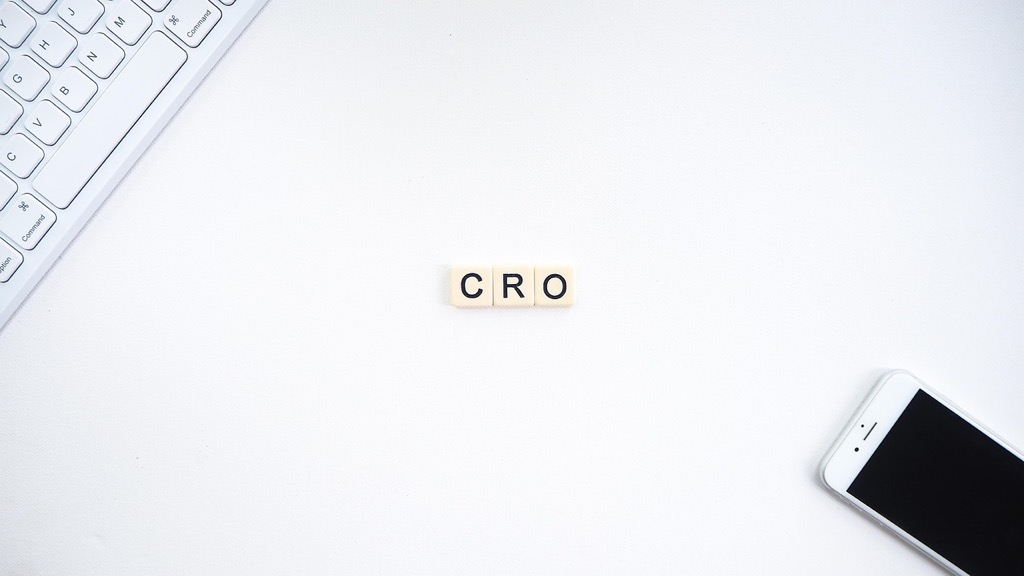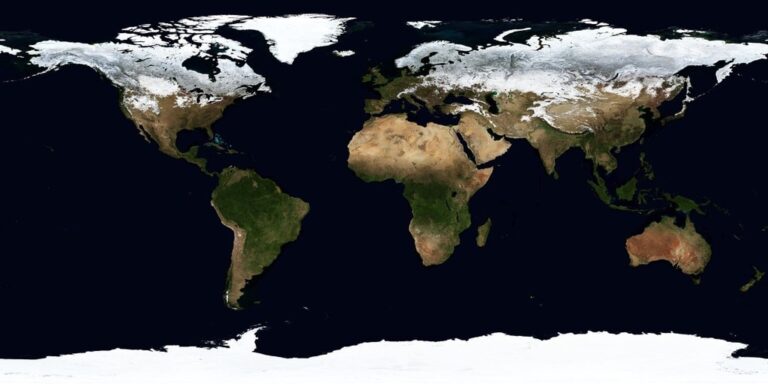5 Multimodal Coordinate Conversion Techniques That Transform Digital Maps
Why it matters: Converting coordinates between different systems becomes critical when you’re working with GPS data, mapping applications, or geospatial analysis projects that require precise location accuracy.
The big picture: Modern coordinate conversion involves sophisticated multimodal techniques that can handle complex transformations between geographic, projected, and local coordinate systems while maintaining spatial precision across different reference frames.
What’s ahead: You’ll discover five proven multimodal approaches that streamline coordinate transformations, reduce computational overhead, and ensure data integrity across multiple coordinate reference systems.
Disclosure: As an Amazon Associate, this site earns from qualifying purchases. Thank you!
Understanding Multimodal Coordinate Conversion Fundamentals
Coordinate conversion forms the backbone of modern geospatial workflows where you’ll regularly encounter datasets from multiple sources using different reference systems.
What Are Multimodal Coordinate Systems
Multimodal coordinate systems represent spatial data through multiple reference frameworks simultaneously, allowing you to work with geographic, projected, and local coordinate systems within a single dataset. These systems enable seamless integration of GPS coordinates, survey data, and imagery coordinates without losing spatial relationships. You’ll encounter multimodal systems when combining satellite imagery with ground-based measurements, where each data source uses its native coordinate reference system for optimal accuracy.
Why Coordinate Conversion Matters in Modern Applications
Coordinate conversion ensures data compatibility across platforms and maintains spatial accuracy when integrating multiple data sources in your mapping projects. Modern GIS applications require precise transformations between coordinate systems to prevent misalignment errors that can exceed several meters. You’ll need reliable conversion techniques when working with real-time GPS tracking, autonomous vehicle navigation, and emergency response systems where coordinate precision directly impacts operational success and safety protocols.
Common Challenges in Cross-Modal Data Integration
Cross-modal data integration presents accuracy degradation issues when transforming between coordinate systems with different datum references and projection parameters. You’ll face computational complexity challenges when processing large datasets that require multiple transformation steps, particularly with real-time applications demanding sub-second response times. Datum inconsistencies between legacy survey data and modern GPS coordinates often create alignment errors that compound during multi-step conversion processes, requiring careful validation procedures.
Technique 1: Vision-Language Coordinate Mapping
Vision-language coordinate mapping combines computer vision algorithms with natural language processing to establish spatial relationships between visual elements and textual descriptions. This technique enables automated coordinate extraction from multimodal datasets containing both imagery and descriptive text.
Image-Text Spatial Alignment Methods
Semantic segmentation algorithms identify objects within images while natural language models parse corresponding text descriptions to establish coordinate relationships. You’ll achieve precise alignment by using attention mechanisms that correlate visual features with spatial references in text. Cross-modal embedding techniques map image regions to textual coordinates through shared vector spaces. Transformer-based models like CLIP excel at matching geographic descriptions with visual landmarks, enabling automatic coordinate extraction from captioned satellite imagery or annotated maps.
Feature Vector Transformation Processes
Neural networks transform raw image pixels and text tokens into unified coordinate representations through learned embedding spaces. You’ll process visual features using convolutional layers while text features pass through attention mechanisms before fusion. Multi-head attention architectures align spatial information across modalities by computing similarity scores between image patches and text segments. The transformation pipeline converts heterogeneous inputs into standardized coordinate vectors, enabling direct mapping between visual locations and textual spatial references through learned geometric relationships.
Real-World Applications in Computer Vision
Autonomous navigation systems use vision-language mapping to interpret road signs and GPS coordinates simultaneously for enhanced positioning accuracy. You’ll find this technique in augmented reality applications that overlay digital information on real-world locations by matching visual scenes with coordinate databases. Satellite imagery analysis combines visual land cover classification with textual geographic metadata to automate coordinate extraction from survey reports. Emergency response systems leverage this approach to correlate witness descriptions with drone imagery for precise incident location mapping.
Technique 2: Audio-Visual Coordinate Synchronization
This technique synchronizes temporal audio signals with spatial visual data to create unified coordinate systems. You’ll leverage synchronized timestamps to align audio frequency patterns with visual coordinate positions across multiple data streams.
Temporal-Spatial Coordinate Alignment
Temporal alignment establishes precise synchronization between audio timestamps and visual coordinate frames using cross-correlation algorithms. You’ll implement time-code matching protocols that align audio waveform peaks with specific pixel coordinates in video streams. Digital audio workstations like Pro Tools provide frame-accurate synchronization at 96kHz sampling rates. Spatial registration maps audio source locations to visual coordinate systems through triangulation methods, enabling precise positioning of sound events within your visual reference frame for applications requiring sub-millisecond accuracy.
Cross-Modal Feature Extraction Techniques
Audio feature extraction captures spectral characteristics including MFCCs, spectrograms, and frequency domain representations that correlate with spatial positions. You’ll use tools like librosa in Python to extract 13-dimensional MFCC vectors at 22kHz sampling rates. Visual feature extraction identifies keypoints, optical flow vectors, and depth information using OpenCV algorithms. Cross-modal correlation techniques like canonical correlation analysis align audio features with visual coordinates through shared embedding spaces, creating unified feature vectors that preserve both temporal audio characteristics and spatial visual information.
Implementation in Multimedia Processing Systems
Real-time processing requires specialized hardware configurations including multi-core CPUs and dedicated audio interfaces supporting ASIO drivers for latency reduction below 10ms. You’ll implement buffer management systems using circular buffers to maintain synchronization during continuous data streams. Software frameworks like FFmpeg provide robust multimedia processing pipelines supporting multiple codec formats and real-time streaming protocols. Quality control involves continuous monitoring of synchronization drift using phase-locked loops and automatic correction algorithms that maintain coordinate accuracy within ±0.1% tolerance across extended processing sessions.
Technique 3: Sensor Fusion Coordinate Transformation
Sensor fusion coordinate transformation integrates multiple sensor inputs to create unified coordinate systems with enhanced accuracy and reliability. This technique combines data from various sensors like GPS, inertial measurement units, and visual odometry systems to overcome individual sensor limitations.
Multi-Sensor Data Integration Approaches
Kalman filter implementations serve as the foundation for integrating GPS coordinates with accelerometer and gyroscope data in real-time applications. Weighted averaging algorithms combine sensor readings based on confidence levels, prioritizing high-accuracy GPS signals over lower-precision magnetometer data during coordinate transformations. Particle filter methods handle non-linear sensor fusion scenarios where traditional linear approaches fail to maintain coordinate accuracy. Extended Kalman filters accommodate complex sensor models that involve quaternion-based orientation data and multi-rate sampling frequencies across different sensor types.
Calibration and Registration Methods
Static calibration procedures establish baseline relationships between sensor coordinate frames using known reference points and controlled environments. Dynamic calibration techniques continuously adjust sensor parameters during operation, accounting for thermal drift and mechanical vibrations that affect coordinate accuracy. Cross-validation protocols verify sensor alignment by comparing overlapping coordinate measurements from different sensor pairs. Registration matrices transform coordinates between sensor reference frames using homogeneous transformation parameters that account for translation, rotation, and scaling differences between individual sensor coordinate systems.
Applications in Robotics and IoT Systems
Autonomous vehicle navigation relies on sensor fusion to combine LIDAR coordinates with camera-based visual odometry for precise path planning and obstacle avoidance. Drone positioning systems integrate GPS coordinates with barometric altitude sensors and optical flow measurements to maintain stable flight coordinates in GPS-denied environments. Smart city infrastructure uses networked sensors to create unified coordinate systems that track assets and monitor environmental conditions across large urban areas. Industrial robotics employs sensor fusion for precise robotic arm positioning, combining encoder data with external tracking systems to achieve sub-millimeter coordinate accuracy.
Technique 4: Neural Network-Based Coordinate Translation
Neural network-based coordinate translation leverages deep learning architectures to automatically learn complex transformation patterns between different coordinate systems. This technique eliminates the need for manual parameter tuning while achieving high accuracy across diverse multimodal datasets.
Deep Learning Approaches for Modal Conversion
Convolutional neural networks excel at processing spatial coordinate data by learning hierarchical feature representations from input coordinates. Recurrent neural networks handle sequential coordinate transformations effectively by maintaining temporal dependencies across transformation steps. Transformer architectures process multimodal coordinate pairs simultaneously through self-attention mechanisms that capture long-range spatial relationships. Generative adversarial networks create synthetic coordinate mappings for data augmentation while preserving geometric consistency across different coordinate reference systems.
Attention Mechanisms in Coordinate Mapping
Multi-head attention layers identify critical spatial relationships between source and target coordinate systems during transformation processes. Cross-attention mechanisms align features from different modalities by computing similarity scores between coordinate embeddings and spatial context vectors. Spatial attention weights prioritize relevant coordinate regions while suppressing noise from less important transformation areas. Self-attention modules capture dependencies within coordinate sequences to maintain geometric consistency throughout the translation process while handling complex non-linear transformations.
Training Strategies for Multimodal Networks
Transfer learning accelerates network convergence by leveraging pre-trained models from related coordinate transformation tasks before fine-tuning on specific datasets. Data augmentation techniques generate synthetic coordinate pairs through geometric transformations like rotation and scaling to improve model robustness. Progressive training strategies begin with simple coordinate transformations before gradually introducing complex multimodal scenarios to prevent overfitting. Curriculum learning schedules training examples from easy to difficult coordinate conversion tasks while monitoring validation accuracy to optimize learning progression.
Technique 5: Geometric Transformation for Modal Alignment
Geometric transformation for modal alignment applies mathematical matrices to convert coordinates between different reference systems while preserving spatial relationships. This technique ensures precise coordinate accuracy across heterogeneous datasets through systematic geometric operations.
Mathematical Foundations of Coordinate Conversion
Affine transformations form the mathematical backbone of coordinate conversion using linear algebra matrices to handle translation, rotation, and scaling operations. You’ll apply transformation matrices that maintain parallel lines and ratios between points during modal alignment processes. Projective transformations extend beyond affine operations to handle perspective changes between coordinate systems through homogeneous coordinates. These mathematical foundations enable accurate conversion between geographic, projected, and local coordinate reference systems while preserving geometric integrity across multimodal datasets.
Homogeneous Coordinate Systems Applications
Homogeneous coordinates represent 2D points as 3D vectors, enabling matrix multiplication for complex transformations including translation operations. You’ll use 4×4 transformation matrices for 3D coordinate conversions that combine rotation, scaling, and translation in single mathematical operations. Computer graphics applications leverage homogeneous coordinates for rendering spatial data across different viewing perspectives and projection systems. This approach simplifies coordinate transformation workflows by standardizing mathematical operations across diverse modal alignment scenarios while maintaining computational efficiency for large-scale geospatial datasets.
Optimization Techniques for Accurate Mapping
Least squares optimization minimizes transformation errors by calculating optimal parameters that reduce residual distances between control points. You’ll implement iterative algorithms like Levenberg-Marquardt to refine transformation matrices until convergence criteria are met. Robust estimation methods handle outliers in coordinate datasets using techniques like RANSAC to identify and exclude erroneous points during transformation calculations. These optimization approaches ensure maximum accuracy in modal alignment by systematically reducing geometric distortions while maintaining computational efficiency across diverse coordinate reference systems and multimodal data sources.
Conclusion
These five multimodal coordinate conversion techniques provide you with powerful tools to handle complex spatial data transformations across various applications. Each method addresses specific challenges in modern geospatial workflows while maintaining the precision you need for accurate positioning and mapping.
Whether you’re working with vision-language mapping for autonomous systems or implementing neural network-based translations for large datasets these techniques offer scalable solutions that adapt to your project requirements. The combination of traditional mathematical approaches with cutting-edge AI technologies ensures you can tackle both legacy data integration and future-facing multimodal challenges.
By implementing these conversion methods you’ll enhance your spatial data processing capabilities while reducing computational overhead and maintaining data integrity across different coordinate reference systems. Your choice of technique will depend on your specific use case data types and accuracy requirements.
Frequently Asked Questions
What is multimodal coordinate conversion and why is it important?
Multimodal coordinate conversion is the process of transforming location data between different coordinate systems while integrating multiple data sources like GPS, imagery, and sensor inputs. It’s crucial for modern geospatial applications, GIS systems, and autonomous navigation where precise location accuracy is essential. This technique ensures seamless compatibility between different coordinate reference systems, preventing misalignment errors that could impact operational success in real-time scenarios.
How does Vision-Language Coordinate Mapping work?
Vision-Language Coordinate Mapping combines computer vision algorithms with natural language processing to establish spatial relationships between visual elements and textual descriptions. The technique uses semantic segmentation to identify objects in images while NLP models parse corresponding text descriptions. Attention mechanisms correlate visual features with spatial references in text, enabling automated coordinate extraction from datasets containing both imagery and descriptive content.
What are the main challenges in cross-modal data integration?
The primary challenges include accuracy degradation due to differing datum references and projection parameters, computational complexities when processing large datasets, and alignment errors from inconsistencies between legacy survey data and modern GPS coordinates. Multi-step conversion processes can introduce cumulative errors, requiring careful validation procedures and quality control measures to maintain spatial precision and data integrity.
How does Audio-Visual Coordinate Synchronization enhance positioning accuracy?
Audio-Visual Coordinate Synchronization aligns temporal audio signals with spatial visual data using synchronized timestamps and cross-correlation algorithms. This technique creates unified coordinate systems by matching audio frequency patterns with visual coordinate positions across multiple data streams. The process uses time-code matching protocols and cross-modal feature extraction to preserve both temporal audio characteristics and spatial visual information for enhanced accuracy.
What role does sensor fusion play in coordinate transformation?
Sensor Fusion Coordinate Transformation integrates multiple sensor inputs like GPS, inertial measurement units, and visual odometry systems to create unified coordinate systems with enhanced accuracy and reliability. It uses Kalman filters for real-time applications, weighted averaging algorithms for prioritizing high-accuracy signals, and particle filter methods for non-linear scenarios. This approach overcomes individual sensor limitations and is critical for autonomous vehicles and robotics applications.
How do neural networks improve coordinate translation accuracy?
Neural Network-Based Coordinate Translation uses deep learning architectures to automatically learn complex transformation patterns between different coordinate systems. The technique employs convolutional neural networks for spatial data, recurrent networks for sequential transformations, and transformer architectures for multimodal coordinate pairs. Attention mechanisms identify spatial relationships while maintaining geometric consistency, eliminating manual parameter tuning and achieving high accuracy across diverse datasets.
What mathematical principles govern geometric transformation for modal alignment?
Geometric Transformation for Modal Alignment applies mathematical matrices, including affine and projective transformations, to convert coordinates between reference systems while preserving spatial relationships. The technique uses homogeneous coordinates for complex transformations and optimization methods like least squares and robust estimation to ensure maximum accuracy. These mathematical foundations maintain geometric integrity across diverse coordinate reference systems and multimodal data sources.



